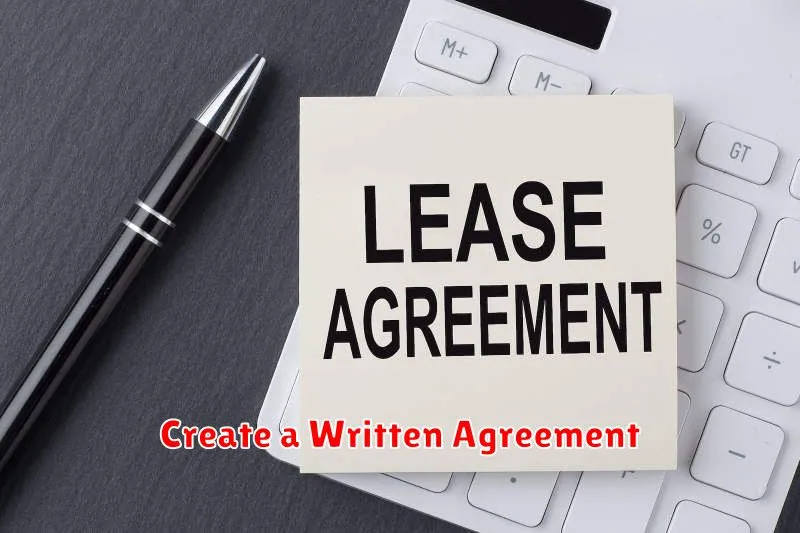Considering subletting your apartment? Navigating the legalities of subleasing can be complex. This comprehensive guide provides essential information on how to sublet your apartment legally, protecting yourself from potential legal issues and ensuring a smooth subleasing process. Understanding your lease agreement, local laws regarding subletting, and proper documentation is crucial for a successful and legally sound sublease.
Whether you’re a tenant looking to sublease for a short period or an apartment owner seeking clarification on the legalities of subletting, this guide will cover everything you need to know. From obtaining necessary permissions to drafting a sublease agreement that protects your interests, we’ll explore the essential steps to ensure your subletting experience is both beneficial and legal. Learn how to sublet your apartment the right way and avoid common pitfalls with this practical and informative resource for legal subletting.
What Is Subletting?
Subletting is the act of renting out a property you lease from a landlord to another individual, known as the subtenant. As the original tenant, you retain your legal obligations to the landlord as outlined in the original lease agreement, even though another person is temporarily occupying the space.
Essentially, you become an intermediary landlord to the subtenant. You collect rent from the subtenant and are responsible for ensuring they comply with the terms of your original lease. The landlord’s consent is usually required for subletting and is often explicitly stated in the lease agreement. Subletting without the landlord’s permission can have serious consequences, including potential eviction.
Subleases can be for a portion of the original lease term or for the entirety of the remaining term. The terms and conditions of the sublease, such as rent amount and duration, are agreed upon between the original tenant and the subtenant, but should never contradict the original lease agreement with the landlord.
Check Your Lease Terms

Your lease is the most important document to consult before subletting. It outlines the rules and regulations governing your tenancy, and it’s crucial to understand what it says about subletting.
Some leases explicitly prohibit subletting. Others may allow it with the landlord’s written consent. Still others may have specific procedures or requirements you must follow.
Key things to look for in your lease include:
- An explicit clause addressing subletting.
- Requirements for obtaining consent (if applicable).
- Any restrictions on who can sublet.
- The duration of allowed subleases.
- Procedures for notifying your landlord.
Carefully review your lease and highlight any sections pertaining to subletting. If you have any doubts or questions, it is highly recommended to contact your landlord or property manager for clarification.
Get Landlord Permission
Securing your landlord’s permission is the most crucial step in legally subletting your apartment. Subletting without consent can lead to serious consequences, including eviction.
Review your lease agreement thoroughly. Many leases explicitly address subletting, outlining specific procedures or restrictions. Some leases may outright prohibit subletting, while others may require written consent from the landlord.
Communicate with your landlord in writing. Clearly state your intention to sublet, providing the proposed subtenant’s details and the sublease term. This documented request creates a clear record of your communication.
Be prepared to provide information about your prospective subtenant, such as their employment history, credit score, and references. This information helps assure your landlord of their reliability and suitability as a tenant.
Screen Potential Subtenants
Thoroughly screening potential subtenants is crucial to protecting yourself and your property. This process helps ensure a responsible individual occupies your space and adheres to the terms of the sublease agreement.
Begin by requesting a sublease application. This should include their full name, contact information, current address, employment details, and references. Verify the information provided by contacting their employer and references. It is essential to ask specific questions regarding their payment history, reliability, and overall suitability as a tenant.
Conducting a background check and credit check are also highly recommended. These checks provide valuable insights into the applicant’s financial stability and potential risks.
Finally, schedule an in-person interview to discuss the terms of the sublease, answer any questions, and gauge their compatibility with the living environment.
Create a Written Agreement

A written agreement, or sublease agreement, is essential for protecting both you and your subtenant. It formally outlines the terms of the sublease, minimizing potential disputes. This document should clearly state the responsibilities of each party.
Key elements to include in your written agreement are the names of all parties involved, the address of the sublet property, the sublease term (start and end dates), the rental amount and payment schedule, and the allocation of utilities and other expenses.
Additionally, specify any restrictions, such as pets, smoking, or guests. Outline the procedures for maintenance requests and address what happens if either party breaches the agreement. Review your original lease thoroughly to ensure your sublease agreement doesn’t violate any of its clauses.

